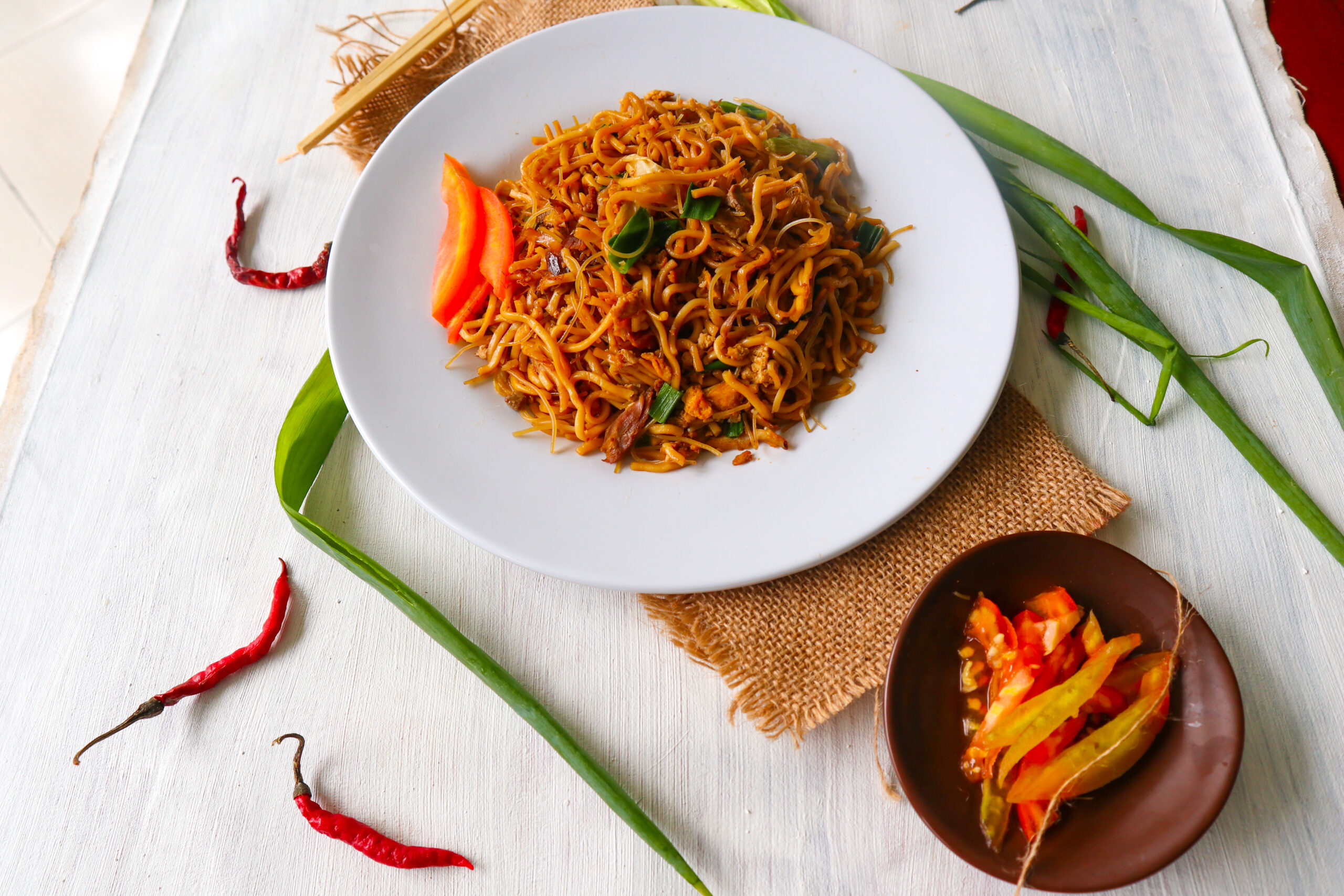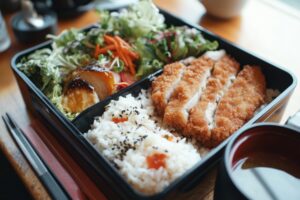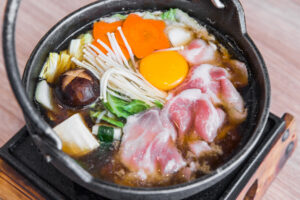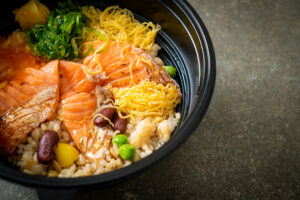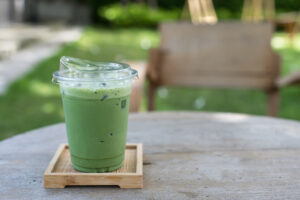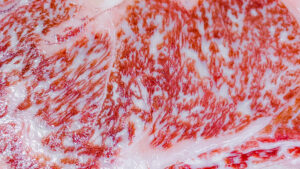Yakisoba, the beloved stir-fried noodle dish of Japan, is more than just a meal; it’s a cultural icon that reflects the country’s rich culinary heritage. With its savory flavors, colorful vegetables, and a variety of toppings, yakisoba has captured the hearts (and stomachs) of food lovers both in Japan and around the world. This article delves into the origins, ingredients, and cultural significance of yakisoba, while providing insights on how to make it at home and explore its diverse regional variations.
What Is Yakisoba? A Deep Dive into the Dish’s Origins
Yakisoba, which translates to "fried buckwheat," is a popular Japanese noodle dish that is typically made with wheat noodles rather than buckwheat. The dish is believed to have been inspired by Chinese chow mein, introduced to Japan in the late 19th century. Initially, yakisoba was prepared using soba noodles, but as wheat noodles gained popularity, they became the standard. Today, this dish is synonymous with street food and casual dining in Japan.
The preparation of yakisoba involves stir-frying noodles with a combination of vegetables and protein, seasoned with a distinct sauce. This sauce, often a blend of Worcestershire sauce, soy sauce, and a hint of sweetness, gives yakisoba its signature umami flavor. Whether enjoyed from a food stall at a summer festival or cooked at home as a quick meal, yakisoba is loved for its simplicity and versatility.
Over time, yakisoba has transcended its origins, adapting to various local tastes and preferences. While maintaining its core components, modern interpretations of yakisoba can include a myriad of toppings, from seafood to seasonal vegetables. This adaptability is part of what has endeared yakisoba to fans of Japanese cuisine worldwide.
Historically, yakisoba gained popularity in the post-World War II era as a cheap and filling meal for the masses. As Japan recovered and rebuilt, street vendors began selling this dish, making it easily accessible and affordable. Its association with festivals and outdoor events solidified yakisoba’s status in Japanese food culture.
In essence, yakisoba is a dish steeped in history, shaped by domestic and international influences. Understanding its origins offers a glimpse into how culinary traditions evolve, creating beloved meals that define cultures.
The Ingredients That Make Yakisoba Unique and Flavorful
At the heart of yakisoba’s appeal lies a simple yet flavorful list of ingredients. The primary component is the yakisoba noodles, which are typically made from wheat flour and are thicker than traditional soba noodles. Their chewy texture holds up well during stir-frying, providing a satisfying bite that makes the dish enjoyable.
The vegetables used in yakisoba are another crucial element. Common vegetables include cabbage, carrots, and bell peppers, which add color, crunch, and nutrition. Cabbage, in particular, is a staple ingredient, adding sweetness and moisture to the dish. Some variations may also incorporate mushrooms, bean sprouts, or green onions, enhancing the flavor profile and nutritional value.
Protein options in yakisoba are diverse, ranging from pork and chicken to tofu and shrimp. Each protein adds its own unique taste and texture, allowing for customization based on dietary preferences or available ingredients. The choice of protein can also dictate the overall flavor, with pork being the most traditional option.
Seasoning is essential in yakisoba preparation. The sauce is the star here, often made from a combination of Worcestershire sauce, soy sauce, and ketchup, sometimes with a sprinkle of oyster sauce for depth. This savory-sweet blend is what sets yakisoba apart from other stir-fried noodle dishes, creating a delightful umami experience.
Garnishes play a vital role in elevating the dish. A typical serving of yakisoba is often topped with aonori (dried seaweed), beni shoga (pickled ginger), and sometimes a dash of mayonnaise for creaminess. These additions provide contrasting flavors and textures, enhancing the overall dining experience.
Ultimately, the unique ingredients and their harmonious interaction make yakisoba a standout dish, inviting endless experimentation and personalization.
How Yakisoba Became a Staple in Japanese Cuisine
Yakisoba’s journey to becoming a mainstay in Japanese cuisine can be traced back to its accessibility and versatility. Following World War II, the dish emerged as a quick and affordable meal for families struggling with post-war scarcity. Street vendors capitalized on this need, selling yakisoba at fairs and festivals, which further ingrained it in daily life.
The rise of yakisoba was also fueled by the growing popularity of noodle dishes in Japan. As the culinary landscape expanded, yakisoba offered a satisfying alternative to rice, allowing for a different texture and flavor profile. Its simple preparation made it a favorite among home cooks, who could easily whip up a meal using leftover ingredients.
Yakisoba’s association with festivals (matsuri) and outdoor events solidified its status as a beloved comfort food. The aroma of sizzling noodles wafting from food stalls became synonymous with summer festivities and community gatherings. As a result, yakisoba transcended the realm of mere sustenance to become a symbol of celebration and social interaction.
Moreover, the Japanese government recognized the importance of promoting local food culture, leading to initiatives that celebrated traditional dishes. Yakisoba found itself at the forefront of these efforts, further enhancing its visibility and popularity both domestically and abroad.
As globalization began to influence Japanese cuisine, yakisoba’s presence began to spread beyond Japan. It became a favorite in Japanese restaurants worldwide, often served alongside sushi and bento boxes. This international exposure contributed to its status as a representative dish of Japanese culinary tradition.
In conclusion, yakisoba’s transformation into a staple of Japanese cuisine is attributable to its affordability, versatility, cultural significance, and global reach.
A Historical Look at Yakisoba’s Evolution Over Time
The history of yakisoba is a fascinating amalgamation of culinary influences and socio-economic changes. The dish’s roots can be traced back to the late 19th century when it was introduced to Japan by Chinese immigrants. Initially, it was prepared using soba noodles, which were later replaced by wheat noodles as the dish evolved.
During the early 20th century, yakisoba was primarily consumed in urban centers, where it was sold by street vendors and at festivals. The post-WWII era marked a turning point, as food scarcity made dishes like yakisoba even more appealing. It became an instant hit among the masses, offering a filling meal at a minimal cost.
In the 1950s and 60s, the rise of convenience foods in Japan further transformed yakisoba. Instant noodles, a popular product at the time, began to incorporate yakisoba-style flavors and preparations, leading to a surge in the dish’s popularity. As instant noodles became a staple in Japanese households, yakisoba was no longer just a street food but also a convenient meal option for busy families.
The 1980s and 90s witnessed a renewed interest in traditional Japanese cuisine, prompting chefs to revisit and refine classic dishes like yakisoba. This period saw the introduction of gourmet versions featuring higher-quality ingredients and unique flavor combinations, broadening the dish’s appeal to a wider audience.
In recent years, yakisoba has gained international recognition, appearing on menus in Japanese restaurants around the world. Social media and food blogs have contributed to its growing popularity, with home cooks sharing their own takes on the dish.
The evolution of yakisoba reflects the broader changes in Japanese society and culinary trends, showcasing how a humble street food can adapt and thrive through cultural exchange and innovation.
The Art of Cooking: Tips for Perfect Yakisoba at Home
Cooking yakisoba at home may seem daunting, but with a few tips and techniques, you can achieve restaurant-quality results in your kitchen. The first step is choosing the right noodles. Fresh or pre-cooked yakisoba noodles are ideal, as they are specifically designed for this dish. If you can only find dry noodles, be sure to cook them according to package instructions before stir-frying.
Next, preparation is key. Gather all your ingredients and chop vegetables and proteins ahead of time for a smoother cooking experience. Yakisoba cooks quickly, so having everything ready will help prevent overcooking or burning.
The choice of pan can also affect the outcome. A large, flat pan or a wok is preferred for even cooking and heat distribution. Preheat the pan before adding oil to ensure the noodles and vegetables will get a nice sear, enhancing their flavor. Using a high smoke point oil, such as vegetable or canola oil, is advisable for stir-frying.
When cooking, add ingredients in stages. Start with proteins, followed by denser vegetables like carrots, and finally, softer vegetables like cabbage. This method ensures each ingredient reaches optimal tenderness without becoming mushy. Toss the ingredients frequently to promote even cooking and prevent sticking.
The sauce is what truly makes yakisoba shine. After adding the noodles, pour your sauce mixture directly into the pan, allowing it to coat the noodles evenly. Stir continuously to ensure that the noodles absorb the flavors. Don’t be shy with the sauce; yakisoba is meant to be flavorful.
Finally, garnish your yakisoba with traditional toppings like aonori, beni shoga, and sesame seeds. A squeeze of lime or a drizzle of mayonnaise can add an extra layer of flavor, making your dish even more enticing.
With these tips, you can create a delicious and satisfying yakisoba that rivals your favorite street food vendors.
Exploring Regional Variations of Yakisoba Across Japan
Yakisoba’s versatility is evident in the regional variations found across Japan, each offering a unique twist on the beloved dish. One notable variant is Osaka-style yakisoba, which is heavier on the sauce and often incorporates a mix of local vegetables. This version tends to be thicker and richer, aligning with Osaka’s reputation for hearty, flavorful cuisine.
In contrast, Hiroshima-style yakisoba showcases a different approach. Here, the noodles are steamed rather than stir-fried, resulting in a softer texture. Often, this variant includes a layer of cabbage and other ingredients, which are piled atop the noodles, creating a distinct layered presentation. The sauce in Hiroshima-style yakisoba may feature a different regional blend, showcasing the local taste preferences.
Moving to the northern part of the country, Hokkaido’s yakisoba often highlights local seafood, such as scallops or shrimp, reflecting the region’s access to fresh marine ingredients. The incorporation of seafood adds a subtle brininess that complements the savory noodles beautifully.
On the island of Kyushu, yakisoba might be served with tonkotsu (pork bone) broth as a dipping sauce. This unique twist allows diners to enjoy the flavors of the broth alongside their stir-fried noodles, creating a rich and satisfying meal. This variation is a testament to Kyushu’s culinary tradition of rich, hearty flavors.
Furthermore, Okinawa’s version of yakisoba, known as Okinawa soba, incorporates thicker, wheat-based noodles and often features a lighter, broth-based sauce with added toppings such as pork belly or fish cake. This adaptation reflects the island’s distinct culinary influences and showcases the diversity of Japanese cuisine.
These regional variations highlight how yakisoba has adapted to local ingredients and tastes, making it a beloved dish throughout the country. Each version tells a story of place and culture, further enriching the culinary tapestry of Japan.
Yakisoba and Street Food Culture: A Popular Combo
Yakisoba has become synonymous with Japanese street food culture, often found at summer festivals, outdoor events, and bustling markets. The dish’s origins as a convenient and affordable meal make it a perfect fit for the lively atmosphere of street vendors. The sight of sizzling noodles and the tantalizing aroma wafting through the air evoke a sense of nostalgia and excitement, drawing in crowds eager to indulge in this beloved dish.
Street food vendors expertly prepare yakisoba in large, flat pans, showcasing their skill in stir-frying the noodles to perfection. The process is a performance in itself, with vendors deftly flipping and tossing ingredients while engaging with customers. This interactive element enhances the dining experience, turning a simple meal into a memorable event.
Festivals (matsuri) are particularly significant for yakisoba’s street food culture. During these vibrant celebrations, food stalls line the streets, offering a variety of dishes, with yakisoba being a standout favorite. The communal atmosphere encourages people to enjoy food together, fostering social connections and a sense of belonging.
In addition to festivals, yakisoba is also a common offering at sporting events and outdoor concerts. The convenience of eating yakisoba on-the-go makes it a popular choice for spectators, who can easily enjoy the dish while cheering on their favorite teams or performers. The combination of excitement, camaraderie, and delicious food creates an electric atmosphere that enhances the overall experience.
Furthermore, the rise of food markets and festivals outside Japan has introduced yakisoba to a global audience. Food enthusiasts from around the world have embraced this flavorful dish, leading to its inclusion in various culinary festivals and street food events. This international appeal showcases the universal love for yakisoba and its ability to transcend cultural boundaries.
As street food continues to evolve, yakisoba remains a quintessential representation of Japan’s vibrant food culture, celebrating tradition while adapting to modern food trends. The dish not only nourishes the body but also enriches communities and fosters connections among people.
A Closer Look at Yakisoba’s Nutritional Profile
Yakisoba, while celebrated for its delicious flavors, also offers a range of nutritional benefits. The core ingredients, including noodles, vegetables, and protein, provide a balanced meal that can contribute to a healthy diet when prepared thoughtfully.
The noodles in yakisoba, typically made from wheat flour, are a good source of carbohydrates, which serve as the body’s primary energy source. However, it’s essential to be mindful of portion sizes, as excess carbohydrates can lead to imbalances in nutritional intake.
Vegetables play a significant role in yakisoba’s nutritional profile, contributing essential vitamins, minerals, and dietary fiber. Cabbage, for instance, is rich in vitamin K and vitamin C, while carrots provide a healthy dose of beta-carotene. Including a variety of vegetables enhances the dish’s overall nutritional content, promoting a balanced diet.
The protein component of yakisoba can vary significantly depending on personal preferences. Options like chicken, pork, or tofu provide necessary amino acids for muscle repair and overall growth. Selecting lean proteins or plant-based alternatives can create a healthier version of the dish without sacrificing flavor.
One aspect to consider is the sauce used in yakisoba. While it adds delightful flavor, the sauce can also be high in sodium and sugar. Making a homemade version allows for better control over the ingredients, enabling you to reduce sodium levels or swap out sugar for healthier alternatives.
Overall, yakisoba can be a nutritious choice when prepared with a focus on balance and moderation. By incorporating a variety of vegetables, choosing quality proteins, and being mindful of the sauce, you can enjoy this delicious dish while reaping its health benefits.
Vegetarian and Vegan Adaptations of Yakisoba Recipes
As dietary preferences evolve, so too do traditional dishes like yakisoba, which can easily be adapted for vegetarian and vegan diets. With its flexible ingredients and preparation methods, yakisoba can become a delicious plant-based meal without compromising flavor.
To create a vegetarian yakisoba, simply replace meat with plant-based protein sources. Tofu, tempeh, or even seitan can provide the necessary protein and texture, ensuring a satisfying meal. These alternatives can be marinated or seasoned to enhance their flavor before stir-frying.
For a fully vegan adaptation, it’s essential to consider the sauce. Traditional yakisoba sauce often contains Worcestershire sauce, which may not be vegan-friendly due to the inclusion of anchovies. Opting for a vegan Worcestershire sauce or making your own sauce using soy sauce, vinegar, and spices can help maintain the authentic taste while adhering to a vegan diet.
In addition to protein alternatives, the vegetable component can be a highlight of vegan yakisoba. Seasonal vegetables like bell peppers, zucchini, and asparagus can be used to add variety and color, making the dish even more visually appealing. The incorporation of mushrooms adds a savory depth that complements the other flavors perfectly.
Furthermore, garnishes can elevate a vegetarian or vegan yakisoba. Toppings like sesame seeds, fresh herbs, or avocado can add texture and richness, enhancing the overall experience. A drizzle of sriracha or chili oil can also provide a welcome kick for those who enjoy a bit of spice.
By making these simple substitutions, yakisoba can cater to a wide array of dietary preferences while maintaining its essence as a beloved dish. The result is a flavorful and satisfying meal that showcases the versatility of this traditional Japanese stir-fried noodle dish.
Yakisoba in Popular Culture: From Festivals to Media
Yakisoba’s presence extends far beyond the kitchen and street stalls; it has made significant inroads into Japan’s popular culture. The dish is often showcased at summer festivals (matsuri), where it has become a symbol of community and celebration. These events feature stalls dedicated to yakisoba, allowing festival-goers to savor this dish while enjoying traditional performances, games, and other culinary delights.
Beyond festivals, yakisoba has also found its way into television shows, movies, and anime, where it is frequently depicted as a comfort food. Its portrayal in media often emphasizes the dish’s simplicity and the joy of sharing food with loved ones, resonating with audiences who appreciate its cultural significance.
In Japanese television dramas and films, scenes featuring yakisoba often serve as a backdrop for meaningful interactions among characters. The act of cooking or sharing a meal becomes a poignant moment, highlighting the importance of food in human connections. This representation reinforces yakisoba’s role as more than just a dish; it embodies the warmth of home and hospitality.
Social media has further amplified yakisoba’s popularity, with food bloggers and influencers sharing their unique takes on the dish. From traditional recipes to innovative adaptations, the visual appeal of yakisoba has captured the attention of food lovers worldwide. Platforms like Instagram and TikTok have allowed enthusiasts to showcase their culinary creations, sparking interest and inspiring home cooks to experiment.
Moreover, yakisoba has become a recurring feature in Japanese food competitions, where chefs demonstrate their skill and creativity in preparing the dish. This not only highlights the versatility of yakisoba but also celebrates the artistry involved in elevating a simple street food to gourmet status.
In essence, yakisoba’s integration into popular culture exemplifies its role as a beloved dish that transcends mere sustenance. Whether enjoyed at a festival, featured in media, or shared among friends, yakisoba continues to evoke a sense of nostalgia and joy, solidifying its place in the hearts of many.
Pairing Drinks: What Goes Best with Yakisoba Dishes?
When it comes to enjoying yakisoba, the right beverage pairing can elevate the dining experience to new heights. The dish’s rich flavors and unique seasoning call for drinks that complement and enhance its taste. Here are a few suggestions for beverages that go well with yakisoba.
Firstly, beer is a classic pairing. The crisp, refreshing qualities of a light lager or a pale ale can provide a delightful contrast to the savory flavors of yakisoba. The carbonation helps cleanse the palate, making it easier to enjoy the dish without overwhelming the taste buds. Additionally, Japanese beers like Asahi and Sapporo are popular choices that resonate with the traditional dining experience.
For those preferring non-alcoholic options, green tea is an excellent accompaniment. The slightly bitter notes of green tea can balance the dish’s umami flavors while providing a refreshing cleanse. Iced green tea, in particular, is a popular choice during warmer months, enhancing the overall experience of enjoying yakisoba.
Another flavorful option is sake,
